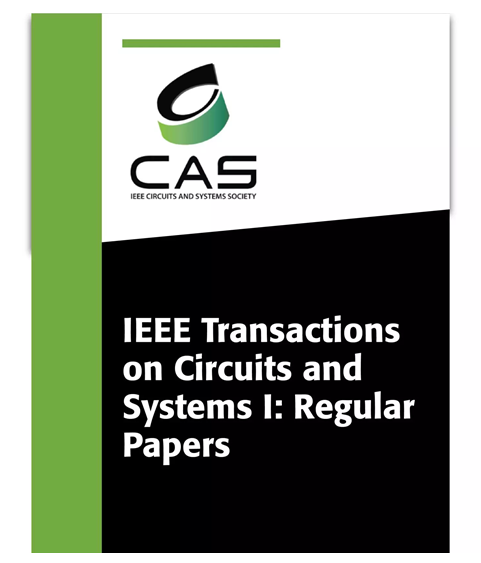Bayes2IMC:基于贝叶斯二值神经网络的内存计算
IF 5.2
1区 工程技术
Q1 ENGINEERING, ELECTRICAL & ELECTRONIC
IEEE Transactions on Circuits and Systems I: Regular Papers
Pub Date : 2025-03-18
DOI:10.1109/TCSI.2025.3543065
引用次数: 0
摘要
贝叶斯神经网络(BNNs)通过将模型权值作为随机变量来生成可能模型的集合。这使他们能够对决策不确定性提供更好的估计。然而,在硬件中实现贝叶斯推理是资源密集型的,因为它需要噪声源来生成所需的模型权重。在这项工作中,我们介绍了Bayes2IMC,这是一种专为二进制bnn设计的内存计算(IMC)架构,它利用了纳米级器件固有的随机性。我们基于相变存储器(PCM)交叉棒阵列的新颖设计消除了阵列内模数转换器(ADC)的必要性,显著提高了功率和面积效率。引入了硬件-软件协同优化校正,以减少硬件上部署的器件引起的精度变化,以及减轻PCM器件电导漂移的影响。我们使用包含1400万个参数的VGGBinaryConnect模型在CIFAR-10数据集上验证了我们方法的有效性,实现了与理想软件实现相当的精度指标。我们还提出了一个完整的核心架构,并将其预计功率,性能和面积效率与等效SRAM基线进行了比较,显示总效率(以GOPS/W/mm2为单位)提高了3.8至9.6倍,功率效率(以GOPS/W为单位)提高了2.2至5.6倍。此外,Bayes2IMC的预计硬件性能超过了文献中报道的大多数记忆BNN架构,与最先进的架构相比,其功率效率提高了20%。本文章由计算机程序翻译,如有差异,请以英文原文为准。
Bayes2IMC: In-Memory Computing for Bayesian Binary Neural Networks
Bayesian Neural Networks (BNNs) generate an ensemble of possible models by treating model weights as random variables. This enables them to provide superior estimates of decision uncertainty. However, implementing Bayesian inference in hardware is resource-intensive, as it requires noise sources to generate the desired model weights. In this work, we introduce Bayes2IMC, an in-memory computing (IMC) architecture designed for binary BNNs that leverages the stochasticity inherent to nanoscale devices. Our novel design, based on Phase-Change Memory (PCM) crossbar arrays eliminates the necessity for Analog-to-Digital Converter (ADC) within the array, significantly improving power and area efficiency. Hardware-software co-optimized corrections are introduced to reduce device-induced accuracy variations across deployments on hardware, as well as to mitigate the effect of conductance drift of PCM devices. We validate the effectiveness of our approach on the CIFAR-10 dataset with a VGGBinaryConnect model containing 14 million parameters, achieving accuracy metrics comparable to ideal software implementations. We also present a complete core architecture, and compare its projected power, performance, and area efficiency against an equivalent SRAM baseline, showing a 3.8 to $9.6 \times $ improvement in total efficiency (in GOPS/W/mm2) and a 2.2 to $5.6 \times $ improvement in power efficiency (in GOPS/W). In addition, the projected hardware performance of Bayes2IMC surpasses most memristive BNN architectures reported in the literature, achieving up to 20% higher power efficiency compared to the state-of-the-art.
求助全文
通过发布文献求助,成功后即可免费获取论文全文。
去求助
来源期刊
CiteScore
9.80
自引率
11.80%
发文量
441
审稿时长
2 months
期刊介绍:
TCAS I publishes regular papers in the field specified by the theory, analysis, design, and practical implementations of circuits, and the application of circuit techniques to systems and to signal processing. Included is the whole spectrum from basic scientific theory to industrial applications. The field of interest covered includes: - Circuits: Analog, Digital and Mixed Signal Circuits and Systems - Nonlinear Circuits and Systems, Integrated Sensors, MEMS and Systems on Chip, Nanoscale Circuits and Systems, Optoelectronic - Circuits and Systems, Power Electronics and Systems - Software for Analog-and-Logic Circuits and Systems - Control aspects of Circuits and Systems.

 求助内容:
求助内容: 应助结果提醒方式:
应助结果提醒方式:


